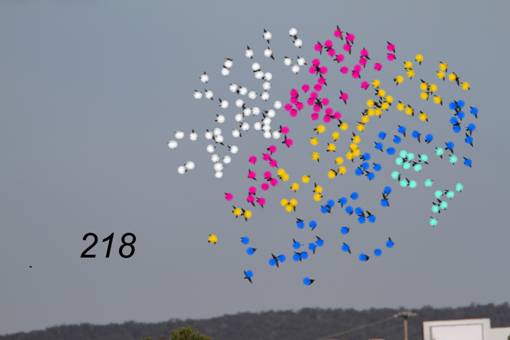I was lucky enough to spend a few days at
the raptor migration watch near Corpus
Christi on the gulf coast of Texas about 10 years ago. There
are a number of these ‘Hawk Watches’ across the states and they
have been running for many years now. Whilst everyone present contributes to
spotting the rarer raptors moving through the official counting is left to a
small group of 4 or 5 observers whom cross check their figures after every ‘kettle’
of raptors moves by. A ‘kettle’ is the US term for a tight flock of
raptors as they rise rapidly on the thermals. Many of the sites, including the Corpus Christi site, employ a
professional bird counter supplemented by very experienced observers to do
these counts.
The professional coordinator at Corpus Christi was a Mexican guy who
had honed his raptor counting skills at Vera Cruz on the Mexican Gulf coast where millions of
birds of prey are counted every year during the Autumn migration.
The reason I am bringing this up is that
the small group of counters were extremely accurate with their counts.
Occasionally they would check their counts against photos of a flock but
generally they just checked against each other. In come cases they may have 1
minute to count a flock of 500 Broad-winged Hawks whilst also picking out the
lower numbers of other species mixed in. With small numbers like 500 the
counters were usually within 5-10 birds of each other.
In the larger ‘kettles’ they may
have up to 5 minutes (often a lot less) to count 5-10,000 birds. The counters
were still usually within 100 birds of each other. Quite remarkable really for a
constantly swirling flock of birds that is rising out of view. They would vary
their counting from individual birds, pair counting (2, 4, 6, 8), fives, tens,
twenties, fifties, hundreds depending on the size of the flock. They would never
count in blocks of more than a 100 and several of the counters would not even
go this high. They would use clickers to aid the counting process.
So confirming Geoffrey’s statement,
they knew what 100 birds looked like. Importantly they also had a very good
feel for what 100 birds looked like at 100m altitude and 800m altitude –
a very different spectacle. Basically lots of experience and practise.
As for counting seabirds on a pelagic trip
when birds come and go as they visit and re-visit a boat – well that
really is a nightmare.
Cheers Dan
-----Original
Message-----
From: Geoffrey Dabb
[
Sent: Thursday,
18 March 2010 11:20
To:
Subject: [canberrabirds]
Estimating numbers
Very interesting. Estimates mentioned to me
ranged from a wary ‘0 – not starlings’ to
‘200-300’. It might or might not be helpful if I told you
that each of the first 4 coloured sections represents 50 birds:

I would think that very few people would know,
intuitively, what 200 birds ‘looks like’. Barbara P mentioned
the semi-counting method of counting 10 - then counting the number
of tens. That depends on having the flock in view for long enough.
John Rawsthorne – an old sheep-counter like a few others – said if
it looks like 100 it’s probably twice that number. That is,
in a way, knowing what 200 ‘looks like’ - it
looks like 100. That kind of knowledge comes from knowing at some stage
the actual number of estimated quantities, so perhaps the sheep counters have
an advantage.
As a matter of interest there are 436 birds in each of
these pictures:



